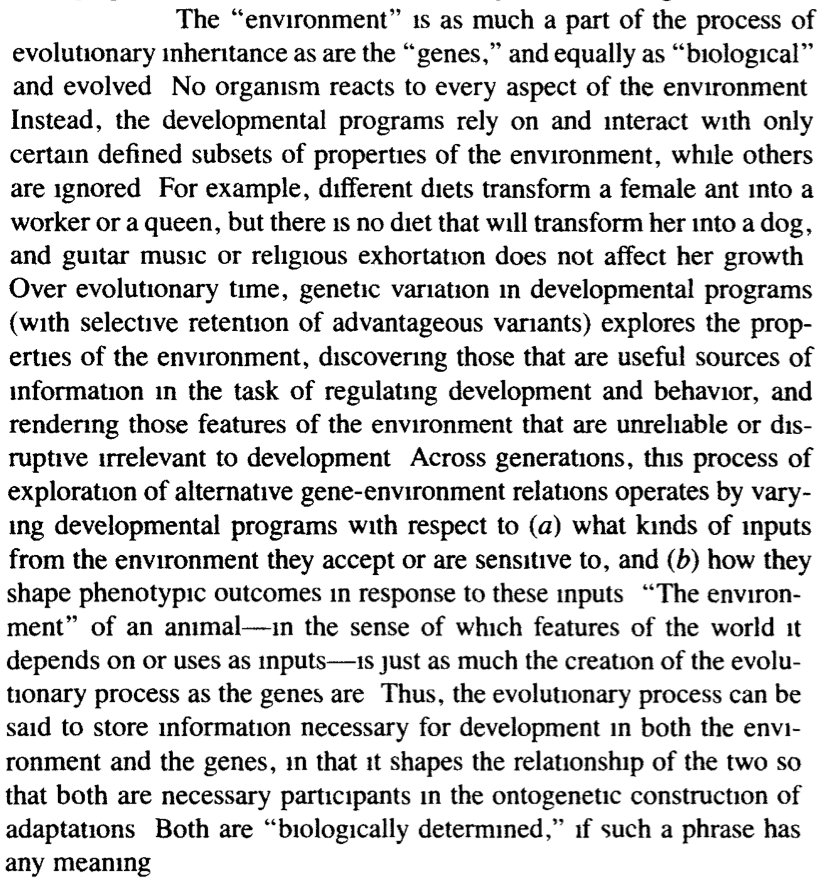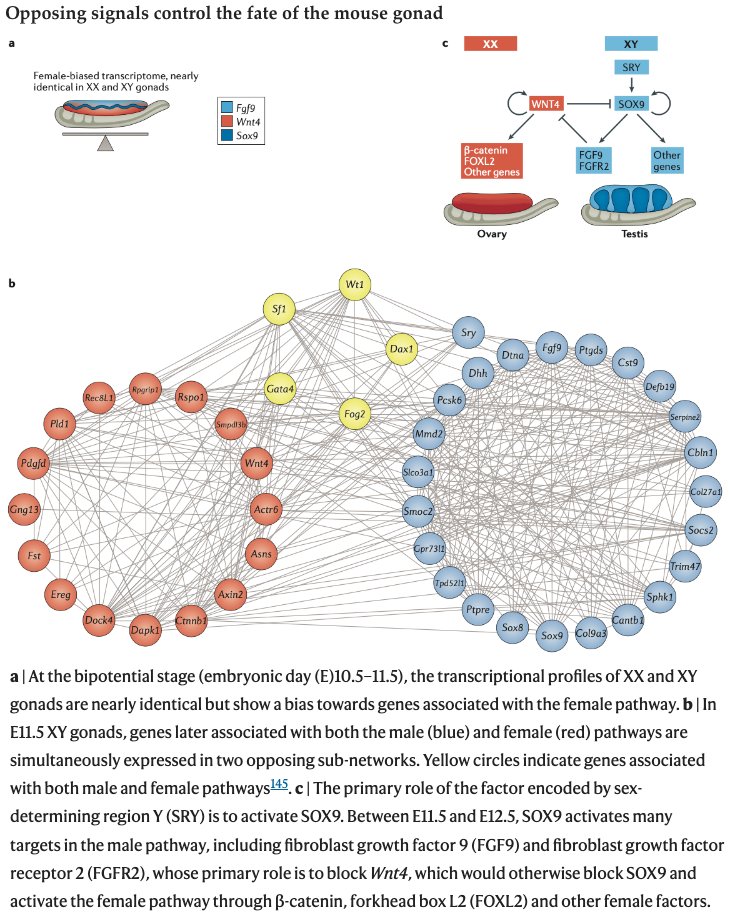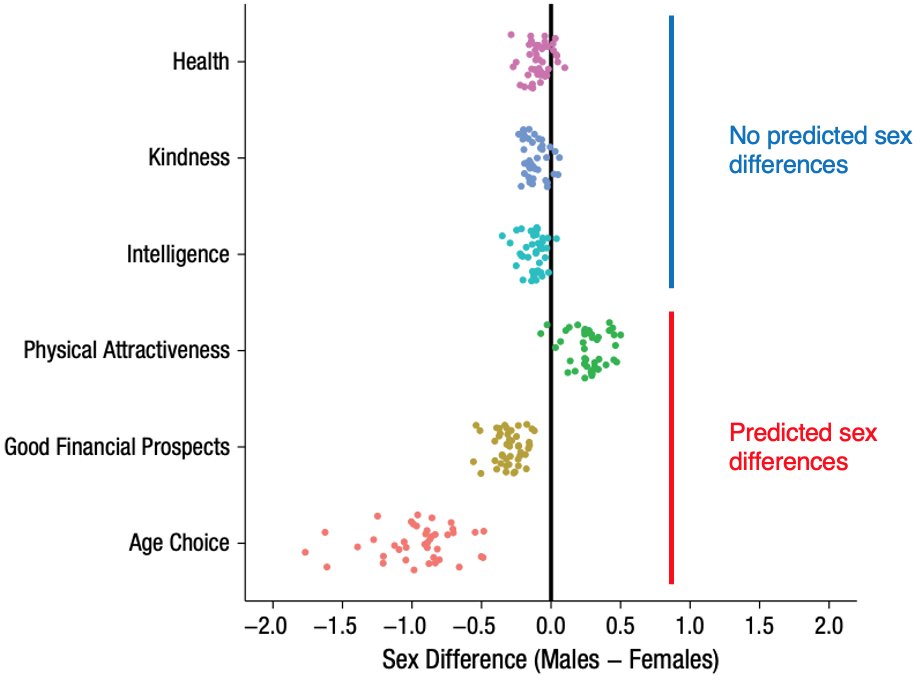Thread
1. In evolutionary psychology (EP), what is genetically coded?
* Behavior? No
* Psychological mechanisms or modules? No
* Developmental programs? Yes!
A brief tweetorial 🧵
* Behavior? No
* Psychological mechanisms or modules? No
* Developmental programs? Yes!
A brief tweetorial 🧵
2. Humans start off as a single fertilized cell that, over 9 months, develops into an intricately structured, 2 trillion cell infant, and over 20 years, into a 30 trillion cell adult.
www.nature.com/articles/s41586-021-03620-1
www.nature.com/articles/s41586-021-03620-1
3. 170 billion of those cells constitute the brain
Human brain organogenesis: Toward a cellular understanding of development and disease www.sciencedirect.com/science/article/pii/S0092867421011776
Human brain organogenesis: Toward a cellular understanding of development and disease www.sciencedirect.com/science/article/pii/S0092867421011776
4. The (genetic) evolution of this process is the purview of #evodevo.
5. Rudolph Raff, a pioneer in #evodevo, describes how the discovery of Hox & other developmental regulatory genes in the 1980's launched this new discipline grounded in genetic developmental programs:
Evo-devo: the evolution of a new discipline:
www.nature.com/articles/35049594
Evo-devo: the evolution of a new discipline:
www.nature.com/articles/35049594
6. A key insight of evo-devo is that a fixed genetic developmental program can produce different--sometimes radically different--phenotypes based on different environmental conditions.
7. These water fleas are genetic clones, for example,
but the left one developed in an environment with chemical cues of a predator, thereby growing a defensive "helmet":
www.science.org/doi/full/10.1126/science.1060701
but the left one developed in an environment with chemical cues of a predator, thereby growing a defensive "helmet":
www.science.org/doi/full/10.1126/science.1060701
8. How can fixed genetic programs produce variable phenotypes? Genomes encode many receptor proteins that can detect the presence or absence of hormones, toxins, pathogens, sunlight, & other environmental cues, & then alter gene expression both during development & in the adult.
9. The adaptive modulation of gene expression by environmental cues has been recognized since the 1960's discovery of the lac operon in E. coli, which produces lactose metabolizing enzymes only when lactose is present and glucose is absent:
www.khanacademy.org/science/ap-biology/gene-expression-and-regulation/regulation-of-gene-expression-a...
www.khanacademy.org/science/ap-biology/gene-expression-and-regulation/regulation-of-gene-expression-a...
10. EP adopts the developmental program concept from #evodevo. However, these programs don't respond to arbitrary environmental conditions in arbitrary ways. Instead, they evolved to respond to specific conditions in very specific ways.
11. Tooby and Cosmides, two EP pioneers, explain how developmental programs evolved to detect specific aspects of the environment critical to fitness, and to adaptively adjust the phenotype (1990):
www.researchgate.net/profile/Leda-Cosmides-2/publication/227614293_On_the_Universality_of_Human_Natur...
www.researchgate.net/profile/Leda-Cosmides-2/publication/227614293_On_the_Universality_of_Human_Natur...
12. Sexual differentiation is a clear example of fixed genetic developmental programs producing different phenotypes. The genetic developmental programs determining sex-specific phenotypes are mostly on the autosomes, which are shared by both sexes.
13. In most mammals, a single gene on the Y-chromosomes, SRY, serves simply as a randomizing switch to activate a network of mostly autosomal genes to create the male phenotype when present (XY), and the female phenotype when absent (XX).
www.nature.com/articles/nrg.2017.60
www.nature.com/articles/nrg.2017.60
14. Sexually dimorphic human mate preference mechanisms, an EP staple, would be generated by universal genetic developmental programs responding to, e.g., sexually dimorphic hormone signals.
15. In principle, the development of psychological and physiological mechanisms could be adaptively adjusted based on many different environmental cues of, e.g., local pathogen pressure, material and social resource availability, or intraspecific competition.
16. Peter Hammerstein and I frame this influential idea in terms of evolved strategies (from evolutionary game theory):
Evolutionary Biology and the Strategic View of Ontogeny: Genetic Strategies Provide Robustness and Flexibility in the Life Course
www.tandfonline.com/doi/abs/10.1080/15427609.2005.9683346
Evolutionary Biology and the Strategic View of Ontogeny: Genetic Strategies Provide Robustness and Flexibility in the Life Course
www.tandfonline.com/doi/abs/10.1080/15427609.2005.9683346
17. Bjorklund et al. (2015) provide a chapter on Evolutionary Developmental Psychology in the Buss Handbook of Evolutionary Psychology:
onlinelibrary.wiley.com/doi/abs/10.1002/9780470939376.ch29
onlinelibrary.wiley.com/doi/abs/10.1002/9780470939376.ch29
18. Finally, here is a review of recent experimental techniques, such as CRISPR, to infer the gene regulatory networks instantiating developmental programs:
onlinelibrary.wiley.com/doi/full/10.1002/jez.b.23132
/end
onlinelibrary.wiley.com/doi/full/10.1002/jez.b.23132
/end








